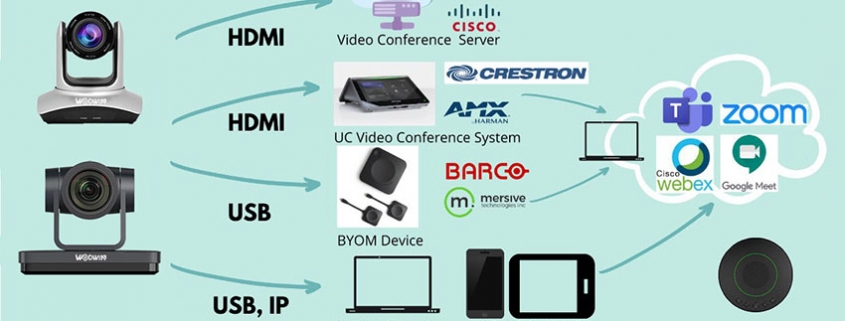Difference between Software and Hardware Video Conferencing
Before choosing a video conferencing provider, first need to clarify what company’s real meeting needs are? Then further compare the choices based on the actual needs of the enterprise.
1. Conference room video conferencing
General conferences are large in scale and usually human-centered. It is necessary to view the situation of all on-site participants through remote conferences, which focuses on improving the image quality of the participants rather than the exchange content. 80% of Chinese companies’ meetings are in the meeting room type. For example, the scene of a traditional video conference, which needs teleconferencing hardware, is “meeting room to meeting room”. Everyone in the meeting does not need to use a computer, and the audio and video effects are better.
2. Collaborative video conferencing
Collaborative conferences are small room video conferencing with a small number of participants. This kind of conference pays more attention to the scope of content collaboration, exchange and collaboration of key content-presentation, etc. 80% of the remote meetings of foreign companies are collaborative meetings. Relatively speaking, the conference scene is lighter. This type of meeting is more inclined to collaboration between the participants, such as presentations and documents during the meeting. Among them, the video function is relatively weak, the equipment is relatively simple to use, and only a mobile phone or a computer is required to cooperate with the video conference software.
3. How to judge whether a video conference software is suitable:
(1) Communication technology and platform infrastructure;
(2) Product easy use;
(3) Improve user productivity;
(4) The ability to connect the business of an enterprise or organization;
(5) The service capability of the supplier.
As a professional supplier responsible for the video conferencing technology, WODWIN will provide you with the best video conferencing services.



